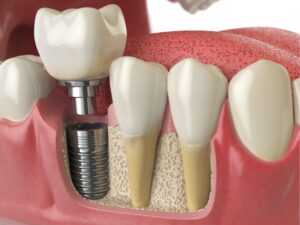Dental insurance offers consumers an effective solution to the cost-of-care dilemma they often experience in receiving the dental care they require. Most plans feature a deductible and annual maximum payment, which govern how much is covered per procedure. Dental coverage can be obtained through employers, individual plans, or the federal marketplace. Many plans also work well with FSA/HSA accounts.
1. Preventive Care
Preventive care under dental insurance plans is usually fully covered, encouraging regular trips to the dentist for checkups that can detect and treat issues like tooth decay early before more costly procedures need to be undertaken in the future. Most plans also offer copay or coinsurance costs for non-preventive procedures; these costs may be decreased if you choose a dentist within their network.
A deductible is the annual amount you must pay towards dental services before your insurance plan begins covering them. Some plans also have waiting periods for non-preventive procedures like fillings and root canals before beginning payments for them.
2. Dental Emergencies
Dental emergencies require immediate action to relieve discomfort, prevent infection, and preserve teeth. Untreated, they could lead to systemic health complications or even cause death.
Purchase of dental insurance can be a wise investment for the self-employed or those without employment-based coverage, particularly those without access to employer coverage. But before selecting a plan, it’s essential to understand all its features — deductibles, copays, and annual limits should all be carefully considered when making this choice. Make sure that you keep a list of dentists’ phone numbers handy, either in your phone or on the fridge, in case an emergency arises, and seek treatment quickly. Try not to panic, as this can escalate the situation and impair judgment.
3. Prevent Tooth Loss
Studies show that regular visits to the dentist can prevent many dental issues; in fact, those who are covered by dental insurance tend to visit more frequently than those without it. Regular dental checkups help dentists identify issues early and save on more expensive procedures like root canals.
Experts advise adults to visit their dentist at least twice each year, and most dental plans support this advice by covering routine care every six months, or twice per calendar year. Some plans may have deductibles and copays that apply as well as annual coverage limits that must be respected.
4. Cosmetic Dentistry
Cosmetic dentistry aims to improve the aesthetics of teeth rather than replacing or repairing them, with an aim to increase smiles and self-esteem. Unfortunately, insurance providers do not cover such procedures.
Composite bonding is an affordable cosmetic procedure used to repair discolored or damaged teeth. Additionally, this process closes gaps between them as well as repairs chipped or cracked ones – often more so than traditional fillings or crowns; yet most dental plans still do not cover it.
5. Emergency Dental Care
Paying a dentist an emergency visit can be costly. By following a proactive oral health routine and having adequate dental insurance coverage, emergency room visits for dental issues may be prevented altogether.
Dental emergencies may include knocked-out teeth, severe dental pain, and jaw fractures. To remain conscious and stay calm during such incidents, stay still and remain calm if one or more teeth have been knocked out; otherwise, gently handle any fallen pieces to try reinserting them into their sockets as quickly as possible. An individual should also familiarize themselves with their dental plan’s deductibles, copays, annual coverage maximum, and waiting periods. A deductible refers to an amount you need to pay before your insurance starts covering costs for you.
6. Restorative Dentistry
Dental insurance can help cover the costs associated with restorative procedures like fillings and bonding, as well as more comprehensive solutions like crowns (also called caps), which are used to repair severely decayed teeth that cannot be fixed with fillings alone.
If your goal is to keep out-of-pocket costs at a minimum, DHMO plans may be best suited for you. They typically feature the lowest deductibles available (in 2020 NADP reported that 26% had deductibles under $25), though they require you to visit only network dentists, which may limit flexibility and convenience.
7. Oral Cancer Screening
Healthcare providers use their fingers to feel for lumps and bumps on the tongue and may coat their fingers with dye, such as toluidine blue, to detect possible signs of oral cancer. People at risk for oral cancer (such as use tobacco, have alcoholism, or have been exposed to HPV in the past) should have screenings at least every three years.
As part of your selection process for dental insurance plans, be mindful of any annual maximums or waiting periods and any benefits reset at the end of each policy year. Dental plans can be found through your employer, professional association memberships, or even individually purchased plans from the Health Insurance Marketplace.
8. Oral Health Education
Oral health education programs can help create demand for dental services, although geographical and cultural obstacles to these services still persist. Dental insurance plans typically provide a list of providers who accept them; these are known as in-network providers and often represent the most cost-effective option for care.
Comprehensive dental insurance can eliminate financial obstacles to regular visits, helping ensure everyone receives the care they require and helping prevent serious future health issues.
9. Prevention of Periodontal Disease
Gum disease (periodontitis) is an inflammatory condition that can lead to tooth loss and other serious health complications. Early gum disease may be reversed through regular dental appointments and good oral hygiene practices; however, once advanced stages occur, it becomes irreversible.
Most dental insurance plans feature annual coverage limits, which represent the maximum amount an insurance company will cover annually, in addition to deductibles and coinsurance provisions. Make sure that you understand these before purchasing a plan so you can make an informed decision about which option best meets your dental care needs.



